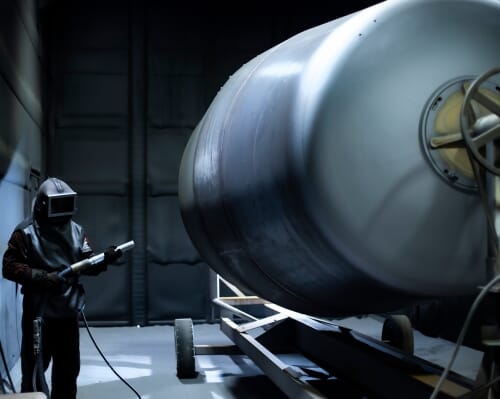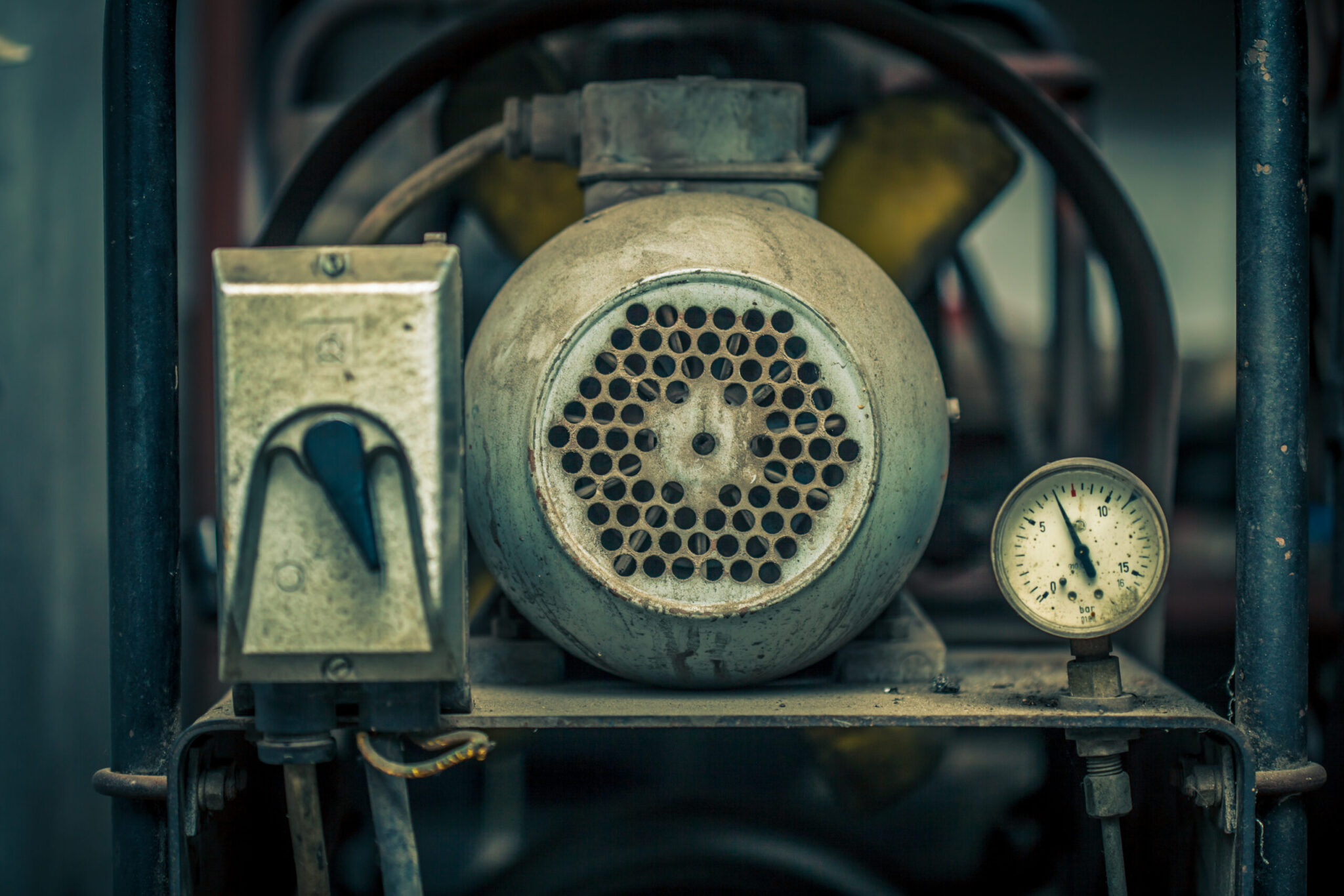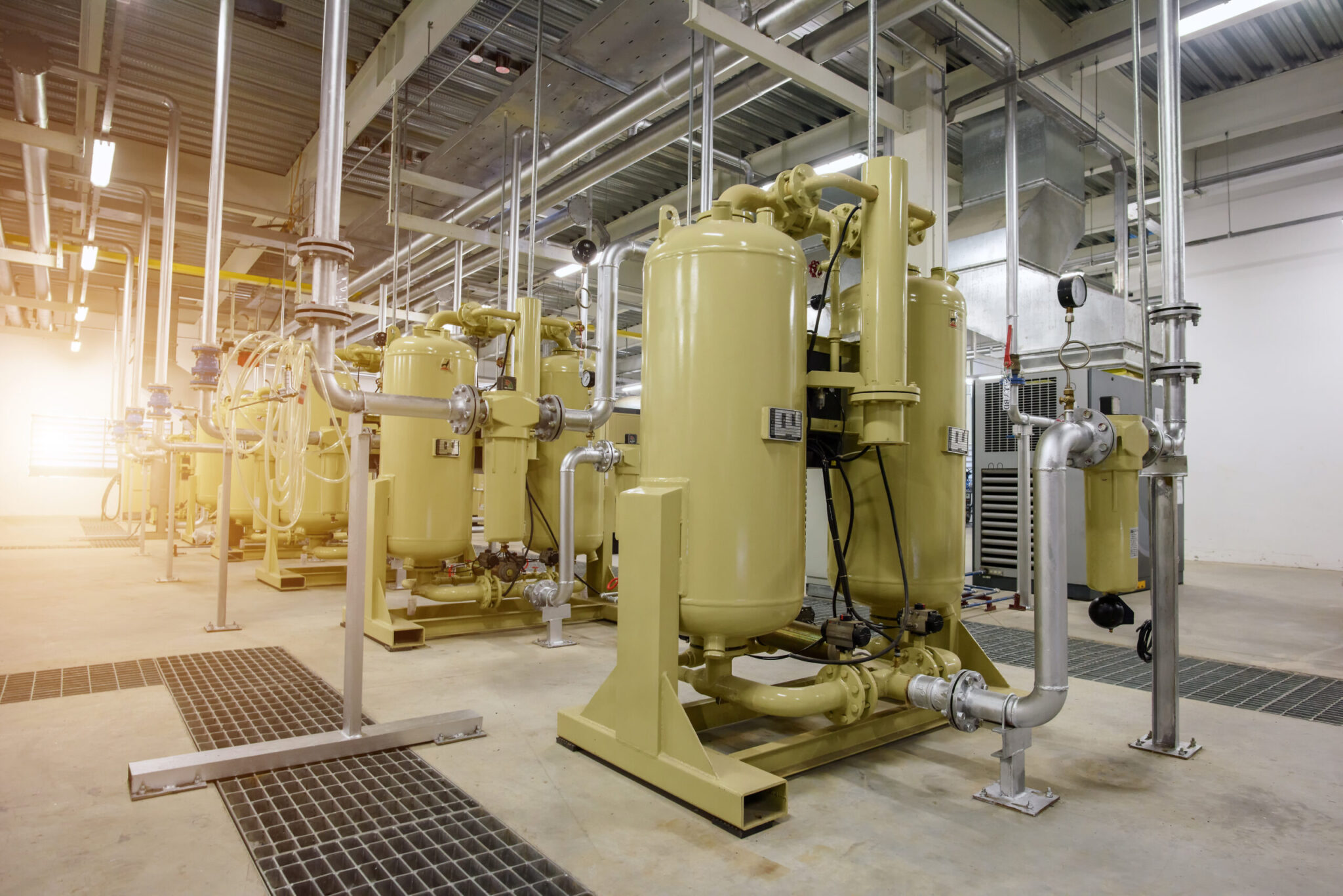
Best Screw Compressors for Sandblasting
May 17, 2023
Four Applications of Industrial Vacuum Pumps in Food and Beverage
May 31, 2023Repair vs. Replacing an air compressor
Kaishan USA | May 24, 2023 | Uncategorized

While it sometimes makes sense to replace rather than repair an aging air compressor, installation challenges—like requiring a crane or helicopter to maneuver it in place—could make a repair a more attractive option.
The pressure delivered by your air compressor system is inconsistent. Air flow is difficult to control. You’re blowing fuses or throwing breakers. You have difficulty starting or stopping your compressor. It’s making loud noises.
Those are critical indications that your air compressor is starting to fail. You’re faced with a familiar dilemma: does my compressor have more life in it? Or is it time to bite the bullet and get a new one?
In most cases, your instinct is to repair. The desire to be conservative with resources (not to mention major pieces of equipment) is understandable. But in other cases, it may be most cost-effective to replace your ailing compressor.
Let’s review the arguments for and against both choices.
When To Repair
Repair Is Simple, Not Extremely Costly
With a regular maintenance program, things can go wrong, even if your unit is relatively new. If the problem can be remedied by a quick fix and is not caused by a more significant issue, repair is probably warranted.
It’s a First-Time Failure
If your equipment is current and hasn’t broken down before, it’s probably wise to repair it. After all, even new equipment can experience some glitches. Or, more likely, your air compression system isn’t fully optimized.
Whatever the reason, the problems you are experiencing may be a wake-up call to make changes. It may be an excellent opportunity to recalibrate or fine-tune your compressor to get it fully optimized for your application.
Equipment Is Relatively New
When a rotary screw compressor is less than five years old, you’re almost always going to fix it, even if it’s an expensive repair.
You Have the Parts, or They Are Easy to Get
Having the parts on hand or readily available is a significant advantage. That’s why so many of our compressed air customers develop strong relationships with their independent Kaishan distributors.
Compressor Installation Is Complex
(Replacing / Installation Would Be Very Expensive.)
Even if a rotary screw air compressor is 10 or 20 years old, you may want to fix it because replacement would be difficult. Because your operation grew as your compressor remained in place, for example, you may need to remove a wall or cut a hole in the roof. You may need a crane or helicopter. We’ve had times when the installation cost exceeded the price tag for the air compressor, the tanks and the dryer.
Not to mention the hidden costs. Piping and electrical connections usually aren’t in the same place. You may have conduit coming through underground, through the cement pad. In short, there are all kinds of hidden issues with a replacement installation.
When To Replace
The Equipment Has Failed Several Times
The age of your compressor or the specific cause of failure may not really matter. Downtime makes everyone impatient. If your compressor has caused several instances/occurrences of downtime, you may already have lost more than a replacement would cost.
A side-by-side comparison of costs might help you make the repair vs. replace decision and sell your recommendation to top management. If you don’t already have payback calculator, your air compressor consultant or independent Kaishan distributor can help you develop one.

An air compressor professional can review your applications and help you determine whether your existing compressor has problems because it is not sized correctly for your facility.
Your Compressor Is Undersized
You may have added several new pieces of equipment or new tools driven by compressed air. Or your compressor was undersized from the beginning. No matter the cause, the overuse—and breakdowns—will only continue.
Unless you’re planning to downsize, it’s wise to recognize that you’ve outgrown your current equipment and scale up to a unit with higher capacity. The good news? All may not be lost. Your existing compressor might still have a role as a backup or even as a trim unit.
Your Compressor Is Oversized
Sometimes the opposite is true. Your compressor may have been sized with “room to grow” or purchased to handle end uses that have since been removed from the system. It may seem counterintuitive, but with air compressors, “too much” is almost as bad as “not enough,” wasting energy, reducing equipment lifetime and requiring more maintenance.

While most companies prefer to repair rather than replace an ailing air compressor, a replacement may be much more cost-effective, especially with equipment that is more than five years old.
Your Unit Is Several Years Old and out of the Manufacturer's Warranty Coverage
If your equipment is nearing the end of its rated service life and you’re looking at a costly repair of an airend, VSD or motor, a replacement may make the most sense. As a rule of thumb, if repair costs are more than half the price of a new unit, replacement probably is the way to go.
Equipment Is Outdated and Not Up to Current Energy Efficiency Standards
Manufacturers are constantly working to improve the efficiency of their products, so the older your air compressor, the more energy savings you will get from a replacement. The energy savings alone almost always tip the scale in favor of a new unit.
An inefficient unit could easily waste more on added electrical costs than you would pay for a replacement. As a result, it’s essential to find out if new technology is available that would produce operational savings shortening your payback period.
Remember, electricity makes up 76% of a compressor’s total cost of ownership, according to the U.S. Department of Energy. Meanwhile, the initial expense to acquire and install the equipment is 12%.
Replacement Parts Are Hard to Get
Admittedly, most manufacturers aren’t always the best at stocking replacement parts, and many stop producing components for aging systems. The longer you hold onto an older compressor, the more difficulty you will have in finding replacement parts.
Kaishan prides itself on after-sales support and having the parts you need available when you need them. That’s one reason Kaishan works with a network of independent distributors. These companies have built their businesses by stocking what their customers need. And that means replacement parts among other things.
Other Considerations
Before committing to a significant capital investment, you may want to check a few issues on your own:
-
- Power. Are there issues with your power supply?
- Fuses. Are the fuses appropriately sized?
- Oil. Is the oil level in the normal range? And are you noticing milky oil, oil in discharge air or excessive oil consumption? These problems may be caused by poor maintenance, poor air ventilation or loose bolts within the oil system.

Leaks, inadequate maintenance or rust build-up in piping could cause poor end-use pressure and air quality.
- Hot discharge air. Check out your cooling system.
- Belt wear. Are you having to replace belts frequently because of poor alignment?
- Piping. Poor end-use pressure and air quality could be caused by leaks, inadequate maintenance or rust build-up in the piping.

Before committing to a replacement, you will want to make sure support tools like air dryers and coolers are operating properly.
End-Use Troubleshooting
You may also want to check end-use applications to ensure that they are not the source of your problems. Are they over-pressurized? Or are they so old and worn out that they should be replaced with newer, more energy-efficient models?
Pay special attention to the tools that require the most pressure. They are the prime suspects in over-pressurization. And the top candidates for energy-efficient replacement.
Unsure Whether to Repair or Replace? Help Is at Hand
We can help you evaluate your application and decide what is right for you. We work with a nationwide network of independent distributors, who have the skills and experience to provide on-site help and consultation. These factory-trained air compression experts have an investment in their local communities and help you develop and operate an air compressor system that meets your needs. And keep it running 24-7.
Key Takeaways
- Signs of failure. Critical indications that your air compressor is starting to fail include inconsistent pressure, difficulty controlling air flow, blown fuses, tripped breakers, loud noises and difficulty starting or stopping your compressor.
- Time to repair. You should probably consider repairing your compressor when the fix is simple, it’s a first-time event, your equipment is new, the parts are easy to get, or the challenges of replacement are too costly.
- Time to replace. You’ll want to do a replacement when your equipment has failed several times, replacement parts are hard to get, the failed component will require a significant expenditure, or the unit is old, outdated or overworked. But you decide to rebuild the airend, you still have a unit with an older motor, controls and other components. So even if the cost of an airend rebuild is less expensive than buying a new unit, the older components could fail causing the unit to go down again. A new unit will have all new components that are under warranty.
- Rule of thumb. If repair costs are more than half the price of a new unit, replacement probably is the way to go.
Let Us Help
Avoiding downtime usually means keeping your air compressor system running smoothly and efficiently. If your system is experiencing problems and you need help evaluating your repair vs. replacement options, get in touch with the experts at Kaishan. Contact us today.
Random stat or
customer quote
textXXtext
text
You’re faced with a familiar dilemma: does my compressor have more life in it? Or is it time to bite the bullet

